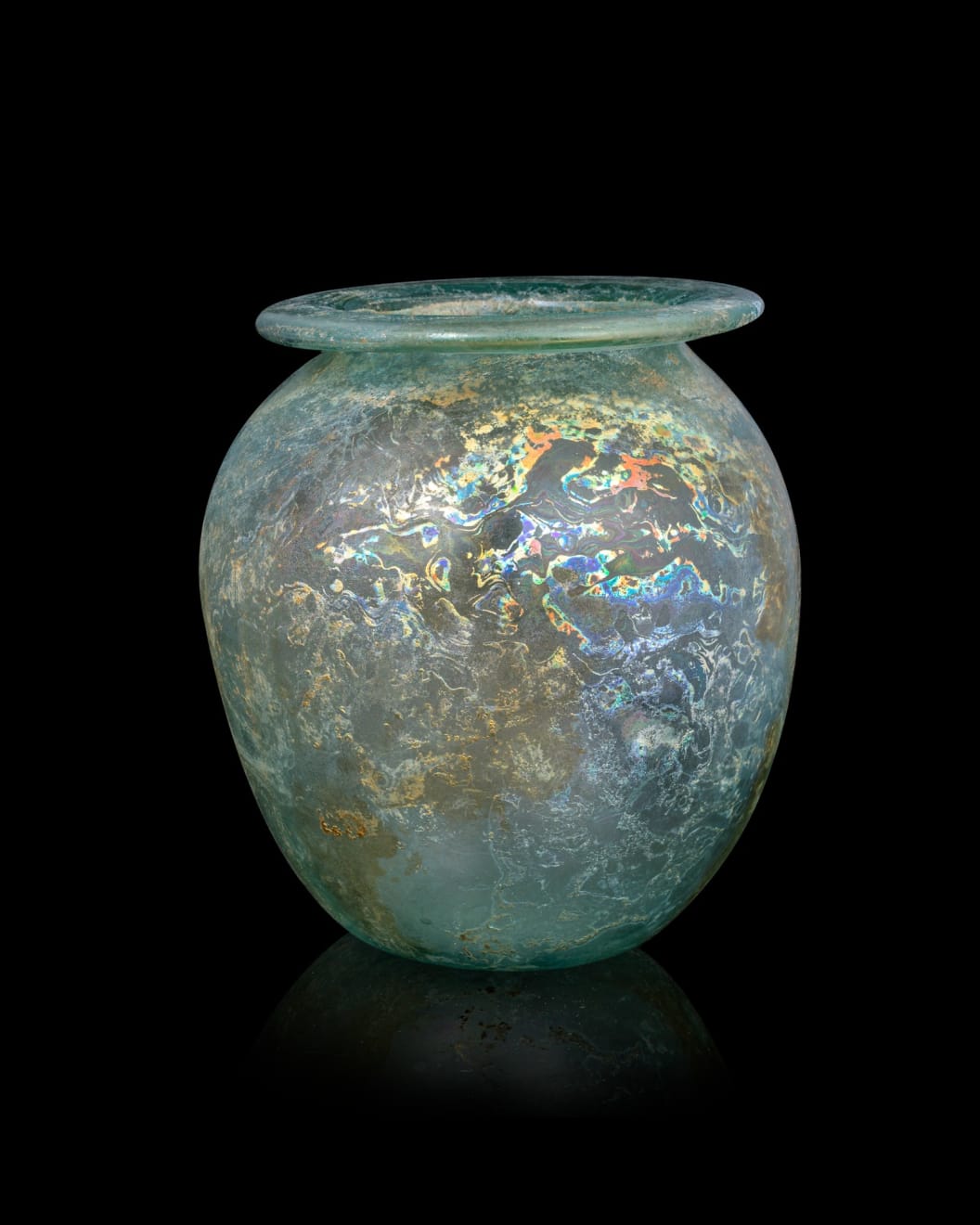Roman
A Roman pale green glass cinerary urn, circa mid 1st - 2nd century AD
Glass
Height: 24.1 cm
The large free-blown vessel has a rounded body, narrowing above the shoulder to a short neck with an everted, folded rim. The base is concave with an old collection number...
The large free-blown vessel has a rounded body, narrowing above the shoulder to a short neck with an everted, folded rim. The base is concave with an old collection number in red paint (15.12?). There is attractive swirling iridescence throughout.
Provenance
Dina (1928-2021) and Raphael (1924-1999) Recanati Collection, New York, acquired by circa 1974, thence by descentLiterature
This type of jar has been found largely in Europe, in the middle and north of the Roman empire. There have been numerous documented finds from Italy, Germany, the Netherlands, France and Britain. The natural assumption is that this type of glass was manufactured in those countries and that the limited finds across the rest of the Roman empire must thus be exported goods. Such large glass jars were used as storage vessels and this is known from finds in Pompeii, Herculaneum, Boscoreale and Settefinestre. However they were also employed for cremation and the jars used for this purpose have survived the centuries in exceptionally good condition, or even intact such as this example, an occurrence which would otherwise be highly unusual for glass of this size.The jar corresponds to Isings form 67a. Often such urns had matching glass lids. For the type, see C. Isings, Roman Glass from Dated Finds, Groningen, 1957, pp. 86-7; D. Whitehouse, Roman Glass in The Corning Museum of Glass, vol.1, Corning, 1997, p. 175, no. 307. For examples in the Louvre found in both France and Italy, cf. V. Arveiller-Dulong and M-D. Nenna, Les Verres Antiques du Musèe du Louvre, vol. II, Paris, 2005, pp. 158-64, nos. 433-57.
